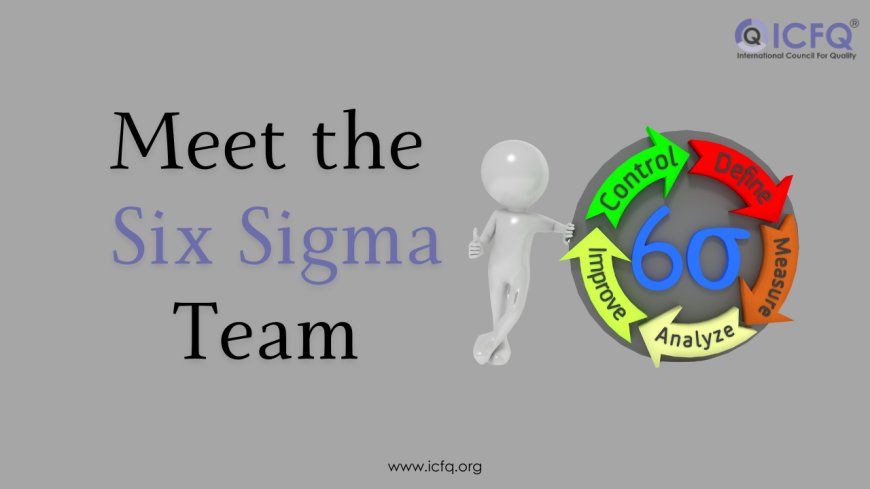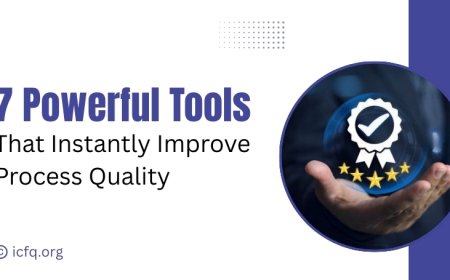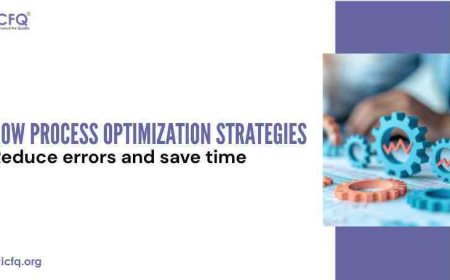Meet the Six Sigma Team- Who Does What?
Discover the roles of Six Sigma team members and their contributions to process improvement. Learn who does what in the Six Sigma methodology.

Six Sigma is a method that helps improve business performance by making processes more consistent and reducing errors. It uses statistics to find problems and figure out how to fix them. This approach can help companies work more efficiently and reduce waste.
The effectiveness of Six Sigma projects depends on the roles within the team. There are several key roles: Executive leadership, Champions, Master black belts, Black belts, Green belts, and Yellow belts. Executive leadership oversees the project, ensuring it aligns with business goals. Champions turn these goals into plans. Master Black Belts guide Black Belts and Green Belts, who manage and carry out the projects. Yellow belts help with simpler tasks. This structure helps organize the team so that everyone knows their role and works together to improve the business processes.
Overview of the Six Sigma Team Structure
A Six Sigma team is structured in layers, each with a specific set of responsibilities that contribute to the team's overall goal of improving business processes through problem-solving and efficiency enhancements. At the top, the Executive Leadership sets strategic goals and ensures the availability of resources. Champions, typically senior managers, oversee the alignment of projects with organizational strategies and facilitate resource allocation.
Master Black Belts provides expertise and training to Black Belts and Green Belts, helping guide the implementation of Six Sigma methodologies. Black Belts lead project teams and are deeply involved in process improvements, while Green Belts support these projects part-time and may lead smaller projects independently. Yellow Belts assist with specific tasks within larger projects, and Subject Matter Experts (SMEs) provide the essential technical knowledge necessary for addressing specific challenges within projects.
Key Characteristics of Effective Six Sigma Teams:
-
Defined Roles: Each team member knows their responsibilities.
-
Leadership and Guidance: Strong leaders such as Champions and Black Belts direct the projects and mentor others.
-
Effective Communication: Regular updates and open communication channels keep everyone aligned.
-
Goal Commitment: All members are dedicated to the project's objectives and the overall success of Six Sigma initiatives.
-
Collaboration: Team members work together, sharing insights and solutions to enhance project outcomes.
Key Core Team Roles
Executive Leadership (Champion)
Executive Leadership (Champion) plays a pivotal role in driving project success by providing overarching guidance and vision. They are responsible for ensuring that the selected projects align with the organization's strategic objectives, thereby maximizing their impact on the overall goals. Their decisions and resource allocation significantly influence the direction and outcomes of projects, making their leadership crucial for strategic alignment and long-term success.
Master Black Belt
Master Black Belts are the experts in process improvement methodologies and techniques. They serve as mentors and guides for Black Belts and Green Belts, offering invaluable support and knowledge to ensure project success. By providing coaching, training, and problem-solving assistance, Master Black Belts enable their colleagues to navigate challenges effectively and implement impactful improvements.
Black Belt
Black Belts takes on the responsibility of leading project teams through the entire project lifecycle. They conduct a thorough analysis of processes, utilizing statistical tools and methodologies to identify areas for improvement. With their project management skills and technical expertise, Black Belts drive significant enhancements in quality and efficiency, delivering tangible results for the organization.
Green Belt
Green Belts play a hands-on role in project execution under the guidance of Black Belts. They actively participate in data collection, analysis, and implementation of process improvements. By contributing their efforts to project teams, Green Belts support the achievement of project goals and help drive continuous improvement within their respective areas of responsibility.
Yellow Belt
Yellow Belts provide valuable support to larger project teams by assisting with various tasks and contributing to process improvement initiatives. While their roles may be more limited in scope compared to higher-level belts, yellow belts play a crucial role in executing projects and driving incremental improvements. Their efforts contribute to the overall success of projects and the organization's continuous improvement journey.
Supporting Team Roles
Project Sponsor
The project sponsor is responsible for providing the necessary resources, support, and guidance for the project team. They champion the project within the organization, secure funding, and ensure that the project aligns with strategic objectives. The project sponsor ensures that the project team has access to the required resources, such as funding, personnel, and technology. They also offer support and guidance throughout the project lifecycle, helping to overcome obstacles and achieve success.
Process Owner
The process owner is accountable for the specific business process targeted for improvement. They oversee the implementation of process improvements and ensure that changes are sustained over time. The process owner monitors the performance of the improved process, identifies any deviations, and takes corrective actions as needed to maintain the gains achieved through process improvement initiatives.
Team Members
Team members actively participate in project activities and contribute their skills and expertise to achieve project goals. They may be assigned specific tasks related to data collection, analysis, implementation of process changes, or other project activities. Team members carry out assigned tasks diligently, collaborate with colleagues, and communicate effectively to ensure project progress. Their contributions help drive the success of the project and the realization of its objectives.
Interaction Between Roles
Different roles collaborate on projects through effective communication and clear decision-making processes. Project sponsors provide support and resources, while process owners oversee the implementation of improvements. Team members contribute their skills and expertise to achieve project goals. Communication channels are established to ensure that information flows smoothly between all stakeholders. Regular meetings and updates help keep everyone informed about the project's progress and any challenges encountered.
In decision-making processes, input from each role is considered to ensure alignment with project objectives. The project sponsor may make high-level decisions regarding resource allocation and strategic direction, while process owners provide insights into the specific needs of the business process. Team members offer valuable perspectives based on their experience and expertise, contributing to informed decision-making. By collaborating effectively and involving all stakeholders in communication and decision-making, projects can progress smoothly towards successful outcomes.
Developing a Successful Six Sigma Team
When building a successful Six Sigma team, it's important to find people who are good at analyzing data and solving problems. They should also be able to communicate well and pay attention to details. Team members need to be committed to making things better and always look for ways to improve.
Training is key for Six Sigma roles. Team members should learn the basic ideas and methods of Six Sigma, like DMAIC, and how to use statistical tools. They can benefit from practical experience and learning from others who have experience in Six Sigma. Continuous learning through workshops, seminars, and certifications helps team members stay sharp and ready to improve processes effectively.
every role within a Six Sigma team is vital for achieving business success. From leaders who provide direction and resources to team members who implement improvements, each contributes uniquely. By working together cohesively, these teams can identify inefficiencies, reduce waste, and enhance overall performance. Harnessing the full potential of a well-structured Six Sigma team enables organizations to adapt, innovate, and thrive in today's competitive landscape, ultimately driving positive change and delivering measurable results for the organization and its stakeholders.





























